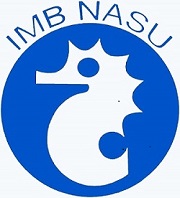CURRENT STATE OF THE MEIOFAUNA AND MACROFAUNA OF THE PERIPHYTON OF COASTAL PROTECTION HYDROSTRUCTURES ON THE ODESSA COAST OF THE BLACK SEA
DOI:
https://doi.org/10.47143/1684-1557/2024.1-2.2Keywords:
Black Sea, Odesa Bay, coastal protection structures, periphyton, meiofauna, macrofaunaAbstract
The article provides a comparative description of ecological indicators of meio- and macrofauna groups according to data from 1991 and 2023 on coastal protection structures (traverses and breakwaters) in the Odesa Bay of the Black Sea. According to observations in 2023, representatives of 10 groups were noted in the meiofauna of coastal protection structures: Nematoda, Harpacticoida, Ostracoda, Turbellaria, Halacaridae, Gastrotricha, Oligochaeta, Polychaeta, and juveniles of Bivalvia and Balanus. The average indicators of the total number of meiofauna were 896203±99230 ind.∙m-2, while its permanent component (eumeiobenthos) represented 44.8% (401946±76703 ind.∙m-2). The share of representatives of the temporary component (pseudomeiobenthos) was 10.4% higher (494257±77148 ind.∙m-2). If in 1991, nematodes dominated in number (56.2%), then in 2023, juvenile bivalves and polychaetes dominated the dominant group in terms of settlement density. In the fouling (periphyton) of concrete hydrotechnical structures, 43 taxa of macrofauna were registered: annelids – 10, molluscs – 9, crustaceans – 21, representatives of other groups – 3. In May–November 1991, 38 taxon’s were found. In 2023 compared to 1991 year, the proportion of sestonophages in the composition of the population was almost twice as large, and the proportion of detritophages was half as small. Among the main taxonomic groups, the number of taxa was dominated by crustaceans (21), by the number (64.4%) and biomass (88.6%) – molluscs; among the trophic groups – by the number of taxa (14) detritophages, by number (81.9%) and biomass (98.0%) – sestonophages. Compared with 1991, there have been some changes in the structure of the periphyton cenosis. The average number of macrofauna was 1.5 times higher, and the biomass was 1.3 times lower. The average number of mussels was 2 times lower, and their biomass was 2.2 times lower.
References
Богатова Ю.И., Бронфман А.М., Виноградова Л.А., Воробьева Л.В. и др. Современное состояние и тенденции изменения экосистемы. Практическая экология морских регионов. Черное море. Киев : Наукова думка, 1990. С. 192–200.
Воробйова Л.В., Кулакова І.І., Бондаренко О.С., Портянко В.В. Мейофауна перифітону природного кам’янистого субстрату (Одеська затока, Чорне море). Морський екологічний журнал. 2020. Т.14, № 2. С. 14–21. DOI: https://doi.org/10.47143/1684-1557/2020.2.02.
Воробьева Л.В. Мейобентос украинского шельфа Черного и Азовского морей. Киев : Наукова думка, 1999. 300 с.
Воробьева Л.В., Кулакова И.И., Бондаренко А.С., Портянко В.В. Контактные зоны Черного моря: мейофауна литоконтура северо-западного шельфа : монография. Одесса : «Фенікс», 2019. 196 с.
Воробьева Л.В., Синегуб И.А. Структура и количественные показатели зообентоса обрастания берегоукрепительных сооружений у берегов Одессы. Глобальная система наблюдений Черного моря: фундаментальные и прикладные аспекты. Севастополь, 2000. С. 132–137.
Зайцев Ю.П. Экологическое состояние шельфовой зоны Черного моря у побережья Украины. Гидробиологический журнал. 1992. 28. № 4. С. 3–14.
Мінічева Г.Г., Бондаренко О.С., Богатова Ю.І., Большаков В.М., Бушуєв С.Г., Гаркуша О.П., Дятлов, Калашнік К.С., Кошелев О.В., Кудренко С.В., Кулакова І.І., Маринець Г.В., Мігас Р.В., Мартинюк М.О., Ніконова С.Є., Рибалко О.А., Синьогуб І.О., Соколов Є.В., Стадніченко С.В, Хуторной С.О., Виноградов О.К., Квач Ю.В., Демченко В.О., Сон М.О. Реакція морської екосистеми на наслідки руйнування греблі Каховського водосховища. Морський екологічний журнал. 2023. № 1–2. С. 52–68.
Одесский регион Черного моря: гидробиология пелагиали и бентали : монография / Л.В. Воробьева, И.И. Кулакова, И.А. Синегуб и др. ; отв. ред. Б.Г. Александров. Одесса, 2017. 324 с.
Bacescu M., Müller G.I., Gomoiu M.-T. Cercetari de ecologie bentala in Marea Neagra (analiza cantitativa, calitativa si comparata a faunei bentale pontice). Ecologie Marina. 1971. Vol. 4. Р. 1–357.
Coull B.C. Role of Meiofauna in estuarine softbottom habitats. Australian Journal of Ecology. 1999. Vol. 24. P. 327–343.
Coull B.C., Bell S.S., Savory A.M., Dudley B.W. Zonation of meiobenthic copepods in a southeastern United States salt marsh. Estuarine and Coastal Marine Science. 1979. Vol. 9. P. 181–188.
Thorson G. Light as an ecological factor in the dispersal and settlement of larvae of marine bottom invertebrates. Ophelia. 1964. 1. P. 167–208.
Thorson G. Some factors influencing the recruitment and establishment of marine benthic communities. Netherlands Journal of Sea Research. 1966. 3. № 2. P. 267–293.
Todorova V., Konsulova T. Manual for Quantitative Sampling And Sample Treatment Of Marine Soft-Bottom Macrozoobenthos. Sofia : IO-BAS, 2005. 38 р.
Vincx M. Meiofauna in marine and freshwater sediments. Methods for the examination of organismal diversity in soils and sediments. Іn ed. Hall G.S. Cambridge : University Press. 1996. Р. 187–195.
Vorobyova L., Kulakova I., Bondarenko O., Portyanko V., Uzun E. Meiofauna of the periphytal of the Odessa coast Ukraine. Journal Black Sea/Mediterranean Environment. 2016. Vol. 22. №. 1. P. 60–73.
Vorobyova L.V., Bolshakov V.M. Meiobenthos of the Black Sea under anomalous climatic conditions. Морський екологічний журнал. 2023. № 1–2. P. 23–32.
World Register of Marine Species. URL: https://www.marinespecies.org (дата звернення: 18.05.2024).







